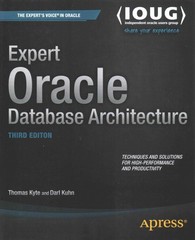Question
WRITE USING C++ In this project, you will implement a linked list class that includes a member function to reverse the encapsulated list in-place. The
WRITE USING C++
In this project, you will implement a linked list class that includes a member function to reverse the encapsulated list in-place. The in-place constraint means that you are prohibited from copying the encapsulated list into any additional storage containers, such as a stack, during the course of the functions run. Although using additional storage containers can help simplify the reversal process, they unnecessarily waste space. Instead, you will use pointer manipulation to reorder the existing list. Consequently, the overall space complexity of your reversal algorithm will be constant O(1). The header for both the linked list class and the list node structure is outlined below.
template //
class LinkedList {
public:
LinkedList() : head(NULL) {}
~LinkedList();
void push_front(const T data);
void pop_front();
void reverse();
void print() const;
private:
struct ListNode {
ListNode(const T data) : data(data), next(NULL) {}
T data;
ListNode* next;
};
ListNode* head;
};
You must write the definitions for the functions push front, pop front, reverse, print, and ~LinkedList. The linked list constructor is already written as an initializer list. For those of you not familiar with initializer lists, head(NULL) is equivalent to writing head = NULL inside the brackets of the constructor definition. An initializer list is also used for the ListNode struct to set the member variable data to a user defined input and the next pointer to NULL. An example of its use is shown in the following code snippet:
ListNode* node = new ListNode(2);
cout << node->data << ", " << node->next <
delete node;
The new command calls the ListNode constructor, which initializes data to the integer 2 (assuming the template type T is set to int) and next to NULL. Thus, the output of the code above will be:
2, 0
Input
Input commands are read from the keyboard. Your program must continue to check for input until the quit command is issued. The accepted input commands are listed as follows:
a i : Add the integer to the front of the list. (push_front)
d : Delete the first element of the list. (pop_front)
r : Reverse the list.
p : Print the data value of each node in the list.
q : Quit the program.
Although your linked list class will be templated, your program will only be tested on integer data. The test suite used for grading will not contain data of any other type, so it is not necessary for you to verify the type of the input data.
Output
Print the results of the p command on one line using space as a delimiter. If the list is empty when issuing any of the commands d, p, or r, output the message Empty. Do not worry about verifying the input format.
Sample Test Case
Use input redirection to redirect commands written in a file to the standard input, e.g. $ ./a.out < input1.dat.
Input
a 1
a 2
a 3
p
r
d
p
q
Output
3 2 1
2 3
An Implementation Issue
The LinkedList class is declared in linked list.h. You may ask should I put the definitions of the functions into a separate source file, say, linked list.cc? The answer would be complicated when a template class is involved, as in this project. Some explanations can be found in https://www.codeproject.com/Articles/48575/How-to-define-a-template-class-in-a-h-file-and-imp and https://www.experts-exchange.com/articles/1199/Separating-C-template-declaration-and-implementation. html. An easy solution would be just putting your implementations in the same header file linked list.h.
Step by Step Solution
There are 3 Steps involved in it
Step: 1

Get Instant Access to Expert-Tailored Solutions
See step-by-step solutions with expert insights and AI powered tools for academic success
Step: 2

Step: 3

Ace Your Homework with AI
Get the answers you need in no time with our AI-driven, step-by-step assistance
Get Started


